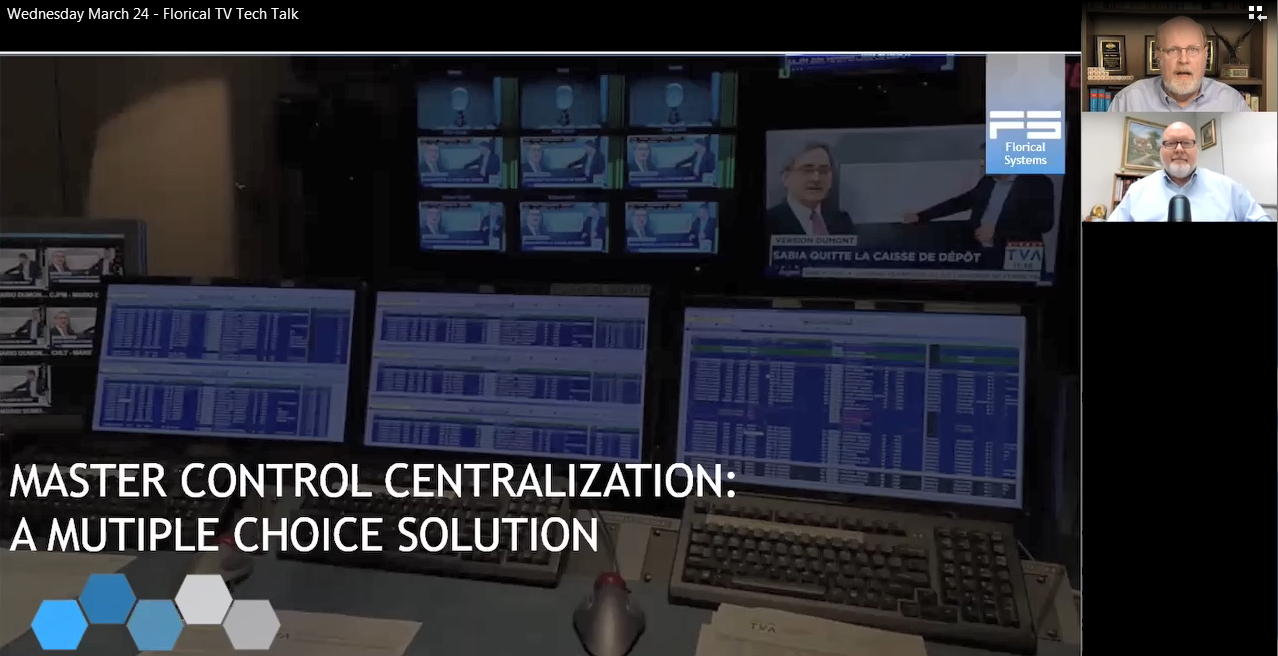TV Tech Talk: Master Control Centralization—A Multiple Choice Solution
Listen to our latest TV Tech Talk with Shawn Maynard, SVP/ General Manager of Florical Systems

As television station groups continue to grow, and as connectivity costs continue to drop, many broadcast executives are interested in analyzing the costs and benefits of centralizing their master control, automation and playout systems. These decisions are always fundamentally based on economics, although the technology needs to be at a level where the necessary services can be delivered reliably for 24x7 operations.
There are many reasons for centralizing broadcast functions, and they can go beyond just simple cost reduction. One major driver is reducing the number of locations where key personnel need to be stationed, and consolidating key pieces of equipment. Another driver is improving the quality and consistency of delivered content. Yet another driver is improved disaster recovery for operations, particularly for unforeseen events including pandemics and natural disasters. Of course, the relative importance of each of these drivers needs to be considered in the context of cost savings and expenditures.
Fortunately, as we discuss in this video, centralization is not an all or nothing proposition. There are a number of different choices that can be made regarding the types of activities that are centralized and the configuration of the different technology elements. The level of centralization can also be adjusted over time as circumstances dictate, so there is little chance of getting locked in to a single solution.
In this video, seven different types of centralized architectures are analyzed, and the tasks that are performed at the hub location are compared with the functions of the spoke locations.
Type 0 is no centralization, where each spoke broadcast station performs all required functions.
Type 1 is centralized control, where the hub facility provides monitoring and control of the playout systems located in each spoke, but the bulk of the equipment continues t reside in each spoke.
Type 2 is centralized ingest, where a single location (typically but not always the hub) is selected to gather incoming content (such as syndicated programming), perform QA and distribute it to the other broadcast stations.
Type 3 is full centralization, where playout is done only in the hubs, and high-speed data links are used to deliver the live-to-air streams to each spoke location. In many cases, the hub has a full backup for disaster recovery.
Type 4 uses cloud-based disaster recovery, which allows the local stations to stay on the air even if the hub location is off-line. This configuration consumes the smallest amount of cloud-based resources, and relies on evergreen content.
Type 5 is a hybrid cloud,, where secondary dot channels are played from the cloud, but main channels are still delivered from the hub facility.
Type 6 is a pure linear cloud, where both main and dot channels are played directly from the cloud to each local station. The central hubs role is reduced to management of the cloud playout, signal monitoring, and overseeing content ingest,
As you can see, with this wide range of choices, “centralization” can be adapted to fit a wide range of technologies and business models.
Watch Shawn Maynard, SVP/ General Manager of Florical Systems, and Wes Simpson, Contributing Editor for TV Technology, discuss Master Control Centralization in this video freshly posted on TV Tech Talks above.
About Florical Systems: Florical Systems is a world-leading broadcast automation solutions provider. For over 35 years, Florical has worked with the largest public and private broadcasters in the industry including single stations, networks, and hub operations. Florical provides solutions that optimize workflows and protect revenues. The company’s product portfolio includes AirBoss, Acuitas, SMART Central and more.
Get the TV Tech Newsletter
The professional video industry's #1 source for news, trends and product and tech information. Sign up below.
